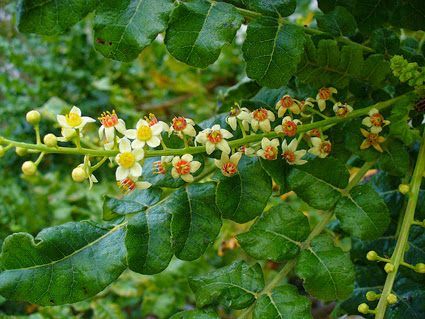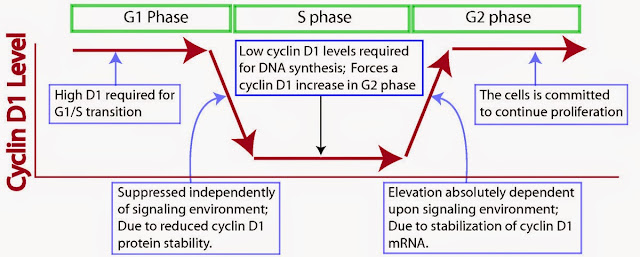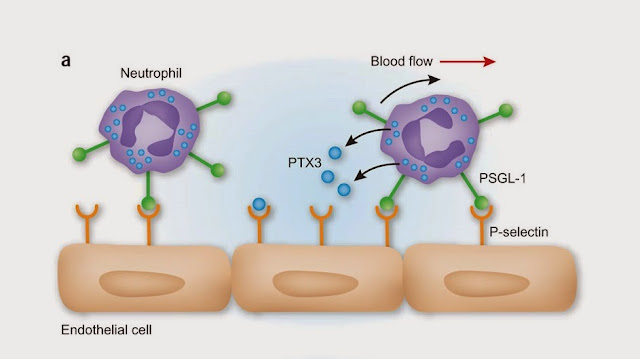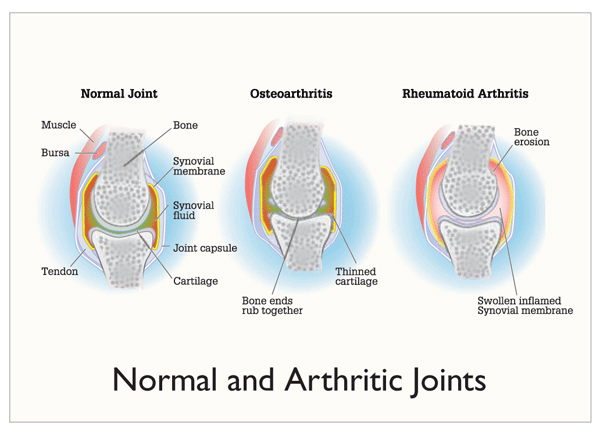authors: Matteo Chiappa & Rosario Luca Furnari
PLANT DESCRIPTION
Boswellia is a genus of trees in the order Sapindales, family Burseraceae in the major group Angiosperms (Flowering plants) known for their fragrant resin which has many pharmacological uses, particularly as anti-inflammatories.
They are moderate-sized flowering plants, including both trees and shrubs, and are native to tropical regions of Africa and Asia. The greatest diversity of species presently is in Africa and India.
There are 40 scientific plant names of species rank for the genus Boswellia. Of these 30 are accepted species names.
They grow in low evergreen tropical forest, laurel forest, tropical and subtropical montane rainforest but also in tropical mountain cloud forest.


For example Frankincense (also known as Olibanum) is an aromatic resin obtained from trees of the genus Boswellia, particularly Boswellia sacra, B. carteri, B. thurifera, B. frereana and B. bhaw-dajiana and it is used in perfumery and aromatherapy. Frankincense is used in many Christian churches including the Eastern Orthodox, Oriental Orthodox and Catholic churches.
In this research we review the medical use of a particular species: Boswellia serrata.
Boswellia serrata (Salai/Salai guggul) grows in dry mountainous regions of India, Northern Africa and Middle East. Slashing the bark, it's possible to allow the exuded resin to bleed out and harden. These hardened resins are called tears. Oleo gum-resin is then stored in specially made bamboo basket for removal of oil content and getting the resin solidified. After processing, the gum-resin is then graded according to its flavour, colour, shape and size.

The oleo gum-resins contain 30-60% resin, 5-10% essential oils, which are soluble in the organic solvents, and the rest is made up of polysaccharides. Gum-resin extracts of Boswellia serrata has always represented one of the pillars of Ayurvedic medicine specially for its well-known effects on reumathic and inflammatory diseases.
In addition to the previous indications, B. Serrata is useful in the treatment of several different pathologic conditions as diarrhoea, dysentery, ringworm, boils, fevers (antipyretic), skin and blood diseases, cardiovascular diseases, mouth sores, bad throat, bronchitis, asthma, cough, vaginal discharges, hair-loss, jaundice, hemorrhoids, syphilitic diseases, irregular menses and stimulation of liver, antihyperlipidemic (controls blood lipids), antiatherosclerotic (anticoronary plaque).
Boswellia serrata, a potential antiinflammatory agent: an overview, 2011
Boswellia Serrata, 2014
Capasso, Grandolini, Izzo, Fitoterapia: impiego razionale delle droghe vegetali 3a edizione, Springer
The plant list
ACTIVE MOLECULES DESCRIPTION
The resinous part of Boswellia serrata contains monoterpenes (a-thujene); diterpenes (macrocyclic diterpenoids such as incensole, incensole oxide, iso-incensole oxide, a diterpene alcohol [serratol]); triterpenes (such as a- and b-amyrins); pentacyclic triterpenic acids (boswellic acids); tetracyclic triterpenic acids (tirucall-8,24-dien-21-oic acids). The structures of four major pentacyclic triterpenic acids (boswellic acids) as also some of their characteristic features are given in the following picture and table.
Clinically the most important molecules are:
- AKBA (acetyl-11-keto-beta-boswellic acid)
- KBA (11-keto-beta-boswellic acid)
- BA (beta-boswellic acid)


Boswellia serrata, a potential antiinflammatory agent: an overview, 2011
SCIENTIFIC CLASSIFICATION
Kingdom: Plantae
Order: Sapindales
Family: Burseraceae
Group: Angiosperms
Genus: Boswellia
Species: B. serrata
Other species:
B. Serrata
B. Sacra
B. Nana
B. Elongata
Boswellia Serrata, 2014
INDICATIONS
Use of B. Serrata in APC treatment; inflammatory diseases (IBD), Rheumatoid arthiritis, osteoarthritis, asthma, cancer.
PHARMACOKINETICS
Route of administration: per os (capsules)
KBA was shown to have half life of 6 hours.
AKBA was shown to have half life of 25 hours
Boswellic acids in chronic inflammatory diseases, 2006
MOLECULAR MECHANISM
The analysis of AKBA molecular mechanism follows the distinction of the different pathologies this molecule acts on.
Adenomatous Polyposis Coli (APC):
Treating an APC patient with AKBA we can pursue several effects: first of all the pro-apoptotic one (through which we block the proliferation of tumors), then we can reach a reduction effect on pro-proliferating and neoangiogenetic signals; finally there are anti-inflammatory effects, usefull to reduce the neoplastic process.
In experimental animals the apoptotic effect is mediated via a pathway dependent on caspases (pro-apoptotic agents); particularly activation of caspase 8 and caspase 3, 9 via an increased cleavage.
AKBA has also inhibitory effect on Fas-L but it doesn't act on Fas/Fas-L interaction or on the expression of these mediators.
It acts also on proapoptotic protein Bax.
In contrast after AKBA treatment, the levels of Bcl2 in intestinal polyps increase.
Apart from apoptotic effect, these acids also inhibites [3H]thymidine incorporation.

AKBA reduces VEGF, HIF-1α and FGF2. These effects seem not to involve normal crypt-villus regions of the intestine, probably they are limited to polyps.
AKBA results in modulation of beta-catenin location: this acid promotes the membrane localization of beta-catenin despite nuclei and citoplasm.
AKBA treatment show a decrease of cicline D1 (in normal cell cycle, a reduction of this cicline corresponds to a switch from G1 to S-phase; the following start of G2 phase depends on an increase of cicline D1 concentration. The AKBA administration blocks the passage to G2 phase indeed).

Proinflammatory factors expression (COX2, NFKB, TNFα, PGE2, LTB4) is reduced in APC colon by the use of AKBA. No effects are demonstrated in normal intestinal mucosa.
It was shown that AKBA treatment inhibit upregulation of p-selectin of vascular endothelial cells of gastrointestinal tract.

Chemoprevention of intestinal adenomatous polyposis by acetyl-11-keto-beta-boswellic acid in APC mice, 2013
Boswellic acids trigger apoptosis via a pathway dependent on caspase-8 activation but independent on Fas/Fas ligand interaction in colon cancer HT-29 cells, 2002
Boswellic acids in chronic inflammatory diseases, 2006
Rheumatoid Arthritis (RA) and Osteoarthritis:
Rheumatoid arthritis is a common autoimmune disease that is associated with progressive disability, systemic complications, early death, and socioeconomic costs.
Rheumatoid arthritis is characterized by synovial inflammation and hyperplasia (“swelling”), autoantibody production (rheumatoid factor and anti–citrullinated protein antibody [ACPA]), cartilage and bone destruction (“deformity”), and systemic features, including cardiovascular, pulmonary, psychological, and skeletal disorders.

Synovitis occurs when leukocytes infiltrate the synovial compartment. Leukocyte accumulation primarily reflects migration rather than local proliferation.
Cell migration is enabled by endothelial activation in synovial microvessels, which increases the expression of adhesion molecules (including integrins, selectins, and members of the immunoglobulin superfamily) and chemokines.
These microenvironmental changes, combined with profound synovial architectural reorganization and local fibroblast activation, permit the buildup of synovial inflammatory tissue in rheumatoid arthritis.
Biochemically different several key molecules and signal mediators are implicated in the pathogenesis of rheumatoid arthritis, as seen in figure.

Our aim is to introduce the role of boswellic acids in rheumatoid arthritis and osteoarthritis.
It was shown that Boswellic acids markedly inhibited clinical sign of joint swelling, significantly decreased the free radical load, modulate inflammatory mediators in arthritic experimental animals.
For example elastase and myeloperoxidase activity which is directly proportional to the accumulation and activation of poly-morphonuclear leukocytes in the inflamed tissue as it is released from stimulated granulocytes at the site of injury.
Moreover it is shown that Boswellic acid reduces the expression of metalloproteinase 3, 9.
Boswellic acids have been reported as inhibitors of human leucocyte elastase (produced and released by PMN). This could be helpfull in autoimmune disorders like rheumatoid arthritis. BSE (Boswellia serrata extract) inhibited elastase activity and this decrease in elastase activity might be due to the inhibition of lipid peroxidation and the consequent reduction of chemotactic peroxide.
Lipid peroxidation is considered a critical mechanism of the injury that occurs during RA.
The large amount of TBARS (Thiobarbituric acid reactive substances) found is consistent with the occurrence of damage mediated by free radicals. Boswellia serrata extract (BSE) has been reported to possess potential antioxidant and free radical scavenging properties, which are thought to initiate cellular damage in cartilage in experimental animals.
In this study scientists found that CIA (Collagen Induced Arthritis) caused a significant increase in lipid peroxides and depletion in GSH and SOD levels. These results clearly indicate that the protective role of BSE was mediated via its antioxidant effect through the suppression of lipid peroxidation and boosting the antioxidant defence system.
Nitric oxide (NO) is an imperative signalling molecule, produced as part of the inflammatory response from activated cells and macrophages.
Increased NO level have been detected in CIA rats similar with those previously reported in synovial fluids of patients with rheumatoid arthritis. Treatment with BSE produced a significant decrease in nitric oxide level and this may have beneficial effects in arthritis by blocking degradation of cartilage.
We remember that the inflammatory process is usually tightly regulated, while in the case of rheumatoid arthritis, a relationship between inflammation and bone homeostasis has been attributed to the effects of cytokines such as TNF-alpha, IL-1 beta, IFN-gamma and IL-6 that are abundantly expressed in patients with RA and in the arthritic joints of rat with collagen-induced arthritis. A reduction of disease severity and bone resorption may be resulted by blockage of these molecules, while IL-4 and IL-10 have potent anti-inflammatory effects and suppress cartilage and bone pathology in rheumatoid arthritis.
In particular AKBA (acetyl-11-keto-beta-boswellic acid), determining inhibition of TNF-alpha and its signaling, has been recognized as a highly successful strategy for the treatment of chronic inflammatory diseases such as rheumatoid arthritis. The effect was mediated by a direct inhibitory action on IKB alpha kinases (IKK) conveyed inhibition of NFkB and subsequent down regulation of TNF-alpha expression in human monocytes.
So AKBA has turned out to be also a natural inhibitor of Nf-kB.

Moreover Boswellia inhibits TH1 cytokines and promoted production of TH2 in splenocytes of experimental animals.
In vitro experiments show that BAS (Boswellic acids) can suppress the conversion of C3 into C3a and C3b with proinflammatory/lytic actions. Moreover BAS was able to enhance the phagocytotic function of macrophages.

As shown in the figure above, another point of action of B.Serrata (of AKBA in particulary) is the synthesis of leukotrienes. In combination with oxygen radicals and elastase activity, leukotrienes cause synovialitis and destruction of cartilage.
In this figure we show the effects of AKBA in the signal transduction cascade of the 5-LO system.
AKBA acts directly on the 5-LO enzyme at a site selective for pentacyclic triterpenes which is different from the arachidonate substrate binding site. The effect of 5-LO inhibition (and so inhibition of leukotrienes) depend on the content of different BAS (Boswellic acids) in different species.

In osteoarthrits (a chronic, progressive degenerative pathology of joints), BAS also demonstrated positive effects: decrease of joint pain, increase of joint flexion and walking distance and increase the ability to climb stairs. Boswellia seems to act on the same targets as explained for RA.
AKBA also interferes with COX-1 in intact human platelets. Comparative studies with well-recognized COX-1 inhibitors revealed that AKBA is about equipotent to Ibuprofen and aspirin in COX-1 inhibition. Possibly, the beneficial actions of AKBA-containing medication in the treatment of pain and inflammatory disorders, in particular arthritis, could also be related to the suppression of the biosynthesis of PGs, in addition to intervention with LTs.
Boswellia serrata extract attenuates inflammatory mediators and oxidative stress in collagen induced arthritis, 2014
Modulation of the immune system by Boswellia serrata extracts and boswellic acids, 2010
Boswellic acids in chronic inflammatory diseases, 2006
Identification and functional analysis of cyclooxygenase-1 as a molecular target of boswellic acids, 2007
SIDE EFFECTS AND TOXICITY
In some clinical trials only few patients reported side effcts referred as epigastric pain, hyperacidity and nausea.
No significants changes of laboratory parameters (as Sodium, Potassium, Calcium, Iron; Glucose, Albumin, Alkaline Phosphatase, GPT, GOT, CRP, ESR, Ferritin) tested on patients suffering from RA, Crohn's disease were observed. Taken together, it appears that extract from Boswellia Serrata are relatively safe.
Boswellic acids in chronic inflammatory diseases, 2006
DEPENDENCE AND WITHDRAW
No dependence or withdrawal syndromes were noticed in the examined literature.
CONCLUSION
We assess that use of B. Serrata in RA, osteoarthritis and oncological and inflammatory pathologies of GI tract can be a useful, secondary treatment option. This statement is also supported by the lack of serious side effects.
However since Boswellic acid is usually administered in addition to eccipients, it's important to consider special formulations for critical patients (because of allergies, hypersensivity etc...).
Unlikely we must remember that often phytotherapeutic preparations are expensive. This aspect can represent a significant problem for patients.